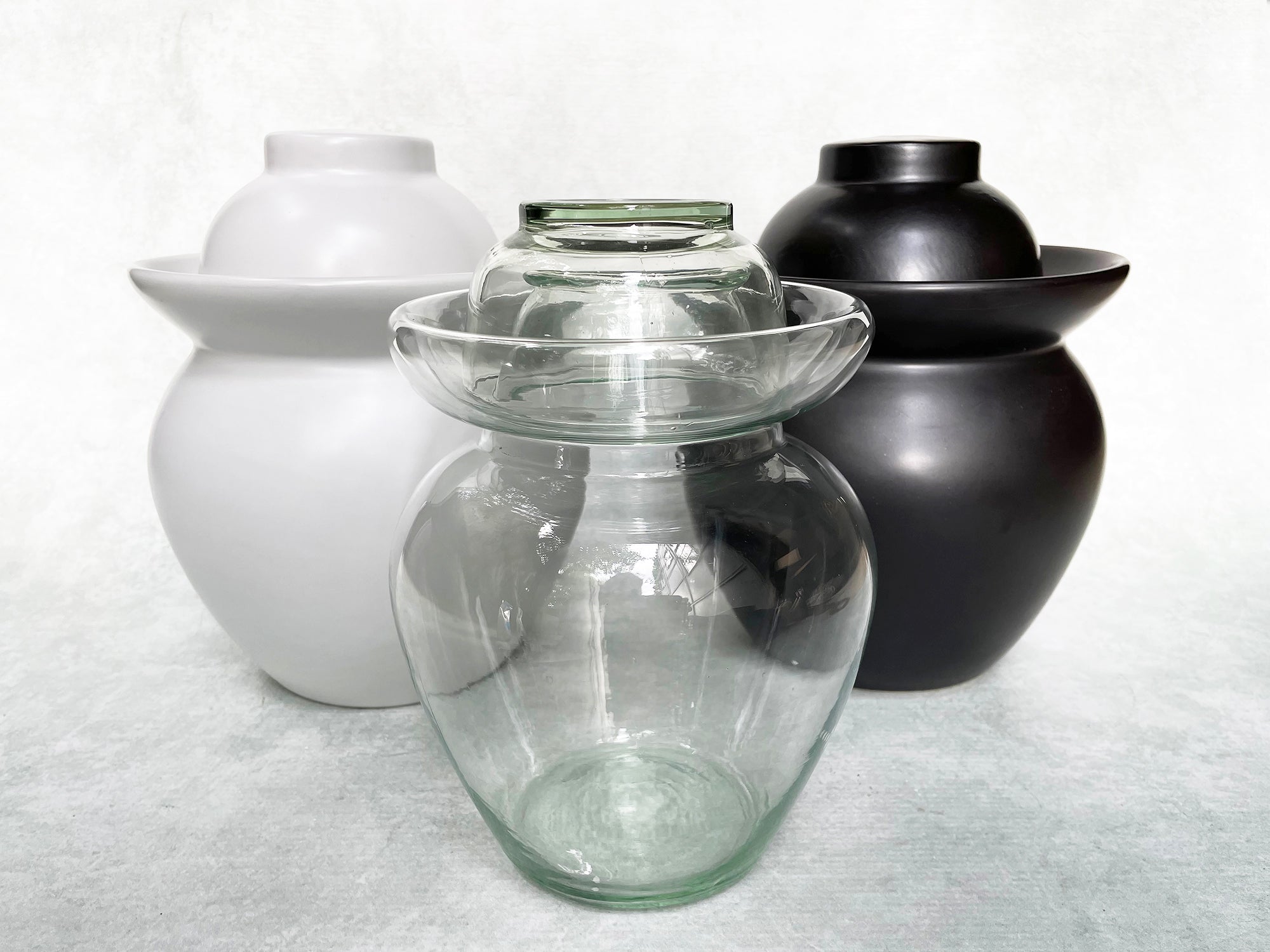DIY Salted Duck Eggs
Vegetables are not the only thing you can preserve in your paocai jars. Our contributor Zoe Yang made salted duck eggs in the black ceramic jar. Now, she happens to looooove salted duck eggs, so making the two dozen that fill the jar worked for her, but you can use a different fermentation vessel to make just a dozen if you like, remembering that, as with vegetables, the eggs must always remain submerged in the brine.
Whether you've never had or heard of salted duck eggs or you chase after every new trendy application of salted egg yolks, you will want to read Zoe's analysis of how the rise of salted egg yolks mirrors the average Chinese citizen's rise out of poverty and into the luxury-loving middle class in the short timespan of her youth. Here's how she begins this homage:
"Nothing makes me think of Nanjing like salted duck eggs—fresh duck eggs preserved in a salt brine, or more traditionally, salty alkaline clay. The process slowly draws all the water content out of the egg and infuses it with sodium, turning the white of the egg, when cooked, into a pickled version of itself—gelatinous, briny and lightly sulfuric. The yolk becomes a translucent orange orb, with taste and texture most akin to the crystals you sometimes find sprinkled throughout very old, very fine Parmesan or Gouda: a sandy, fatty jewel of umami.
"It’s not just that Nanjing is the 'duck capital' of China, accounting for some 100 million ducks consumed annually (and, one presumes, some order of magnitude more duck eggs). It’s not even that Jiangsu Province is where salted duck eggs were invented over a thousand years ago. More simply and selfishly, I was raised on salted duck eggs. I was a picky eater, and late '80s China was pre-reform, pre-wealth China; options were limited. My parents found that the easiest way to deliver enough fat and protein into my mouth was by scooping out a precious half of a salted duck egg and feeding it to me with congee. One half for lunch, the other for dinner."
|

